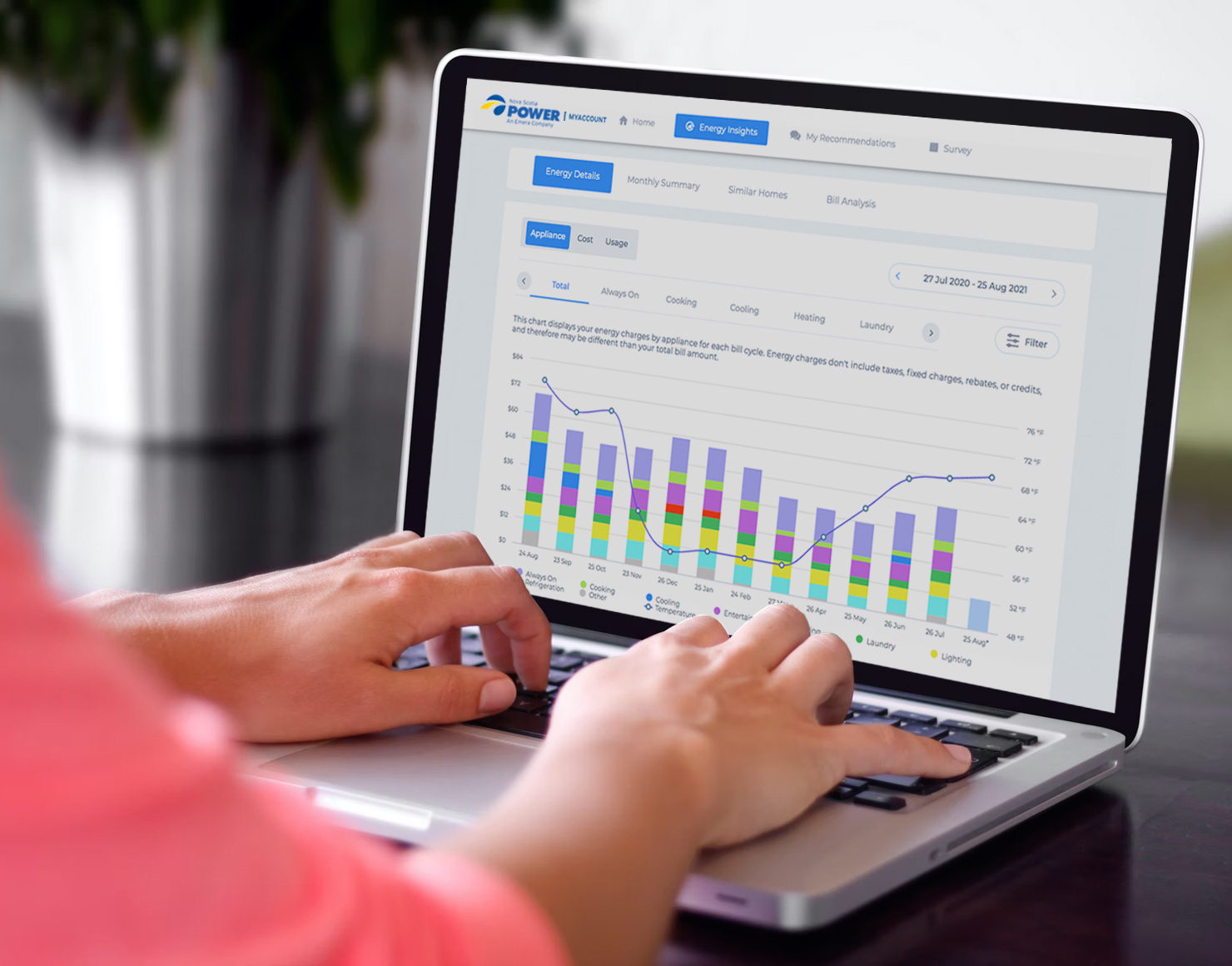Manage Your Account
We are actively responding to a cyber incident and working around the clock to restore all systems safely and securely. We apologize for the inconvenience. We will post updates on nspower.ca as we make progress and restore all services.
MyAccount has a new look
The MyAccount login page has a new look, and we’ve added some helpful features. After you sign in, you can update your password and security question on your new profile page. If you just want to view or pay your bill, select View & Pay Your Bill.
A guide to managing your electricity account
This guide is designed to provide everything you need to know as a Nova Scotia Power account holder.
If you’re a new customer, you might have questions about connecting power or billing and payment options.
As a current customer, you may want insights into your energy usage or the options available if you need help managing your bills.
Whatever your question, we are here to help find the answers.
Making Your Service Request
- Your new street or mailing address, including unit number
- A contact telephone number
- Your date of birth
- Your driver’s license number or government issued ID
Getting Connected
- Permission for us to do a personal credit check completed through Equifax Canada which confirms how well you pay your personal bills.
- A reference letter from another utility showing your payments were made on time.
- A security deposit, equal to three months of service. We will return your deposit with interest when you close your account, or after two years of satisfactory payment history, whichever comes first.
If you want to create a new MyAccount profile, please give us a call at 1-800-428-6230 to start the process.
Understanding Your Usage and Managing Costs

MyEnergy Insights
Interested in learning about your daily energy use? MyEnergy Insights is a digital tool that puts you in control of your energy use. With easy-to-understand data and personalized recommendations, you can make informed decisions about your energy usage and save money on your bills.
Learn more

Rates & Tariffs
Learn more about our current electricity rates and regulations.
Learn more

How to Read Your Bill
Your power bill contains information to help you understand your energy use. This page contains descriptions of each element in the bill you receive on a standard bill, equal billing bill and demand bill.
Learn more
Billing
Paying Your Bill
Help Managing Your Bill
- How much money you owe
- Your ability to pay, your source of income, expenses and number of dependents
- Your payment history
- Your medical needs (if applicable)
- Your employment history
If you are late on a bill payment more than once, the agreement will be cancelled, and you may receive a disconnection notice.
Disconnection
Disconnecting service for non-payment is always a last resort after multiple attempts are made to come up with a payment arrangement or after multiple payment arrangements have been broken.
A disconnection notice, with a required payment amount and due date, can be issued in the form of an email or written letter if:
- There have been no significant payments on the account for more than 30 days after the billing date of the last bill
- Terms of a Payment Agreement have been broken
- A security deposit has not been paid
- A person's identity has been misrepresented to get electricity connected
- There has been an unauthorized interference or diversion of electricity service
If you receive a Disconnection Notice, contact us right away. You can ask for additional time to pay. Once a Notice of Disconnection is received, there is a 16-day period before any further action is taken. This is your opportunity to talk to us about payment arrangements to avoid disconnection.
If you do not pay the amount owing by the due date on the Disconnection Notice, a Final Notice of Disconnection will be issued verbally or by a written notice left at your premises. The notice will include the required payment amount that is due within 7 calendar days to avoid disconnection of service.
- We will not disconnect power when the temperature falls or is forecast to fall below 0° Celsius at any time in the 7 days following the planned disconnection. We encourage you to work with us to keep your account as up to date as possible to avoid getting deeper into debt.
We will not disconnect power when there is a heat warning, or the temperature falls or is forecast to fall bellow 0° Celsius or at any time in the 7 days following the planned disconnection.
We must postpone disconnection for a minimum of 30 days if we receive a letter confirming that disconnection will worsen a serious medical condition for you or someone who lives with you. The letter must be signed by a qualified medical professional and include contact information.
DISPUTE RESOLUTION AND APPEALS
If you disagree with the amount you have been billed or with the reasons given for disconnection, you can make a complaint to the Dispute Resolution Officer (DRO).
The DRO is responsible for resolving billing disputes, including if you have been billed the correct amount, your meter is operating properly, or whether you are responsible for the amount charged.
The DRO communicates by email to ensure there is a record of communication for any complaints. The best way to make a complaint to the DRO is to send an email to nspdisputeresolution@gmail.com.
Once you send a complaint, you do not have to pay the disputed amount until you receive a decision from the DRO. We cannot disconnect your power until 12 days after you receive the DRO’s written decision. You must continue to pay any charges that are not in dispute.
If you disagree with the DRO’s decision, you have 12 days from the date you receive the decision to appeal to the Nova Scotia Utility & Review Board. You must appeal in writing by sending a letter to the Board with your reasons and any evidence you wish them to consider. We will submit evidence to the Board as well – the Board should send you a copy of any material filed in relation to your complaint – If you do not receive a copy contact the Board to request one.
If the DRO decides you are required to pay the disputed amount and you file an appeal of the DRO's decision to the Board, you do not have to pay the disputed amount until the Board issues its written decision.
The DRO is not responsible for arranging payment agreements. If you do not dispute the amount you owe, but need more time to pay your account, you should call us at 1-800-428-6230.
Resources
In support of Nova Scotians living on a low income, our HomeWarming program provides energy efficient upgrades for homeowners, while our Home Energy Assistance Top-up (HEAT) Fund supports with funds for home heating during the cold winter months.



